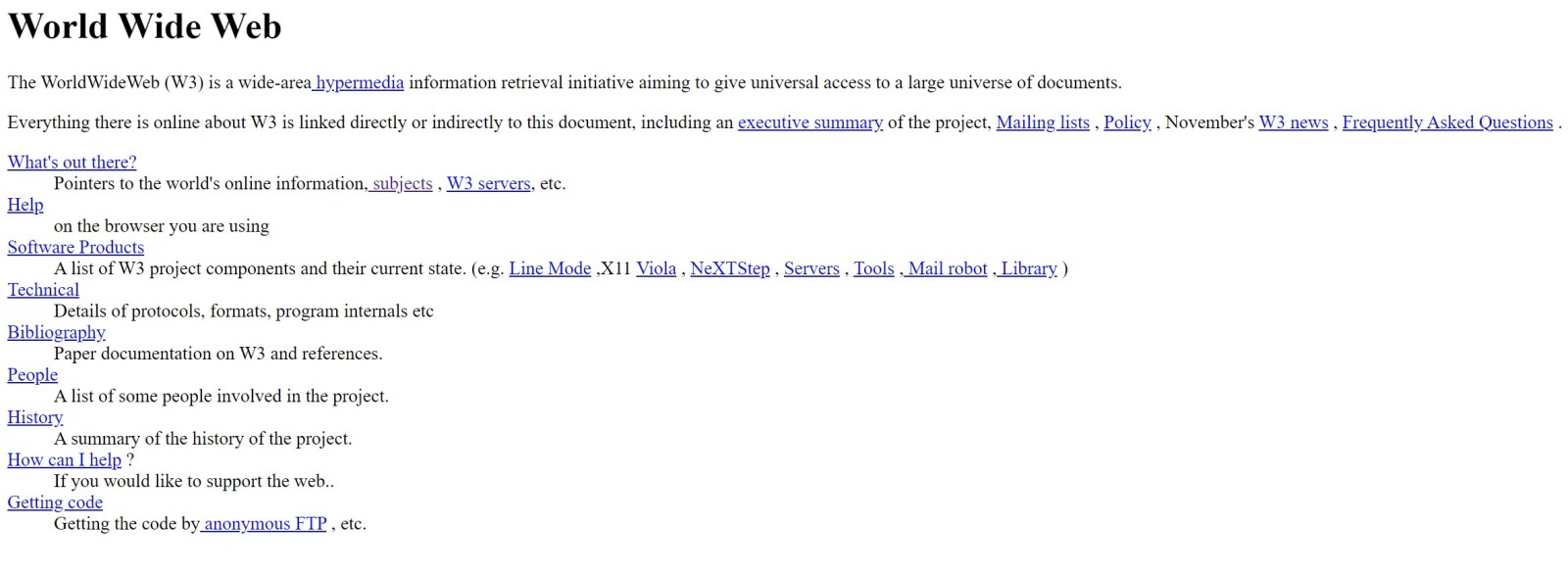These Are the Oldest Websites in the World

Ah, the internet, our modern source for good news and bad news, pleasure and pain, buying things and researching loans because we bought too many things. But with how quickly and widely it’s expanded, multiplied by the years it’s had to do so, the idea of the “entire internet” is laughable now. Of course, this wasn’t always the case. Even the mightiest tree, bearing the fruits of mostly pornography, starts from a single seed.
The internet as we know it — and when I say internet here, I mean the world wide web that still exists at the beginning of most URLs, even if we don’t write it out anymore; if you want to go on at length about TCP/IP and peer-to-peer connections, can it, nerd — was invented in 1989 by a scientist named Tim Berners-Lee who was working at CERN. (No, it wasn't Al Gore.) CERN stands for the Conseil Europeen por la Recherche Nucleaire, or in plain American, the European Organization for Nuclear Research. Which is to say, finding out a computer scientist at CERN invented the world wide web is like finding out a chef in Japan invented sushi.
Don't Miss
Berners-Lee was looking for a way to do that noblest of internet pursuits: share information, instantly. The good kind, not the kind where it’s the address of someone who tweeted something mean about you. So, using his own computer, he created and hosted the world’s first website, and with it, the first web server. His hope was that the website could be used to share information between CERN and other scientific organizations and labs quickly, without the need for a direct, physical computer connection. He started officially working on it in earnest in 1989, and it came to fruition on Christmas Day, 1990. Maybe one of the best Christmas gifts ever given.

Once the website finally went live, however, there was no one to visit it. To do so would require a web browser, another application that had just been invented. Nowadays, everyone has an internet browser, usually two — the one they use, and the dogshit one that came pre-installed on their computer. Berners-Lee had to convince his peers at universities and labs around the world to create their own servers and browsers, because a web that’s not connected to anything, well, that’s just a single piece of spider shit.
Because of this, the world’s first websites are almost exclusively servers for the storage and distribution of information by universities and science labs. The second — and first North American website — was created in 1991 by Paul Kunz of Stanford University’s Stanford Linear Accelerator Center, or SLAC. In 1992, they were joined by a number of other research websites, as well as two sites that are probably a little closer to what we’re used to: a site called "youngmonkey" where people featured DOS software and discussed synthesizers, and, more strangely, a website dedicated to looking up lyrics for bluegrass music.
Okay, I hear you: “Show me what the damn website looks like already!” Fair enough. I just wanted to get all that impressive, fascinating info out of the way first, because you’re not going to believe this, but the world’s first website is a bit underwhelming. It’s kind of like an old spear in a museum: Is it just a pointy stick? Yes. But it’s an important pointy stick. Which is to say, feast your eyes on the first website ever published:

CERN
If you’d like to click around, the website was restored and made available again via CERN at its original URL of https://info.cern.ch/.